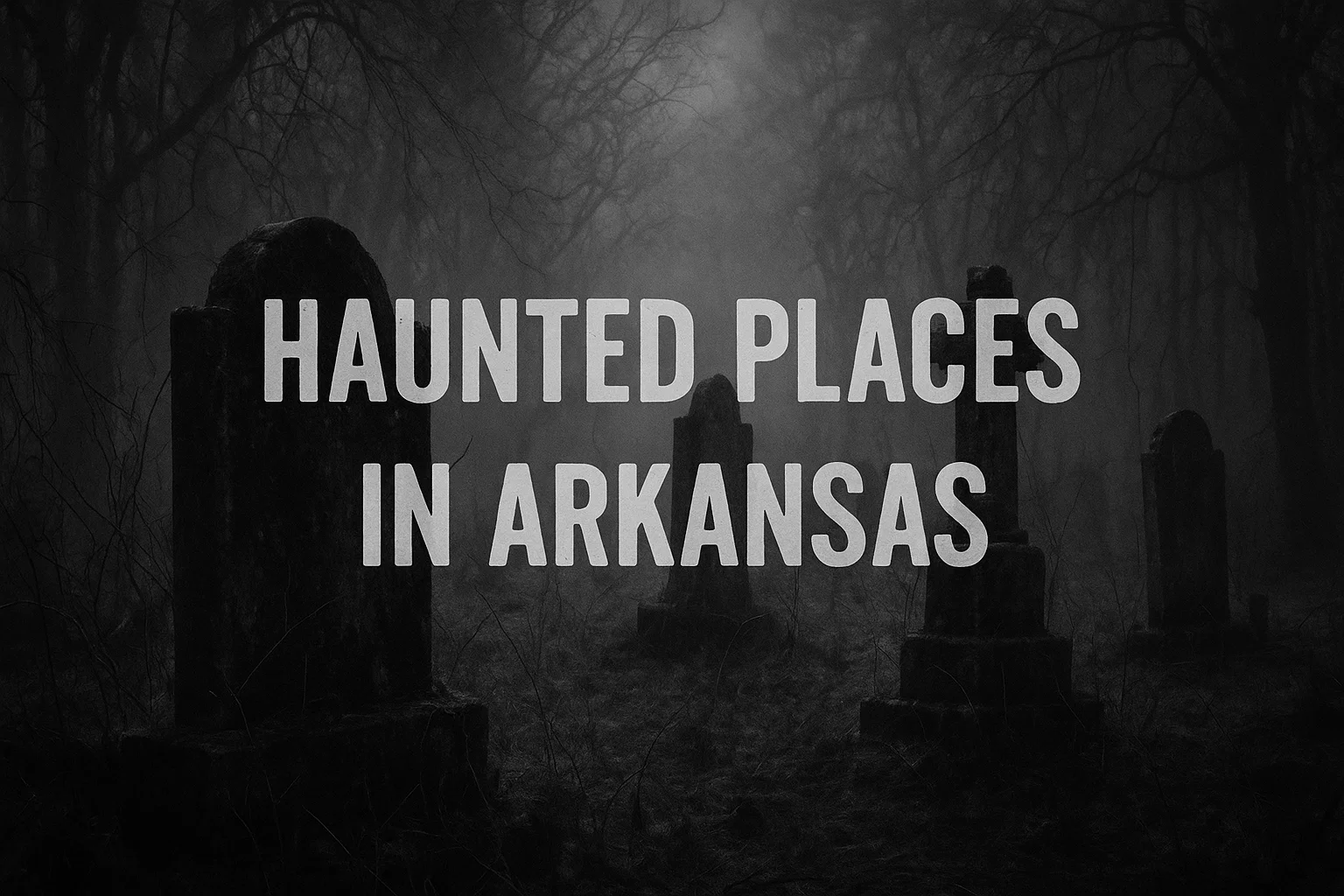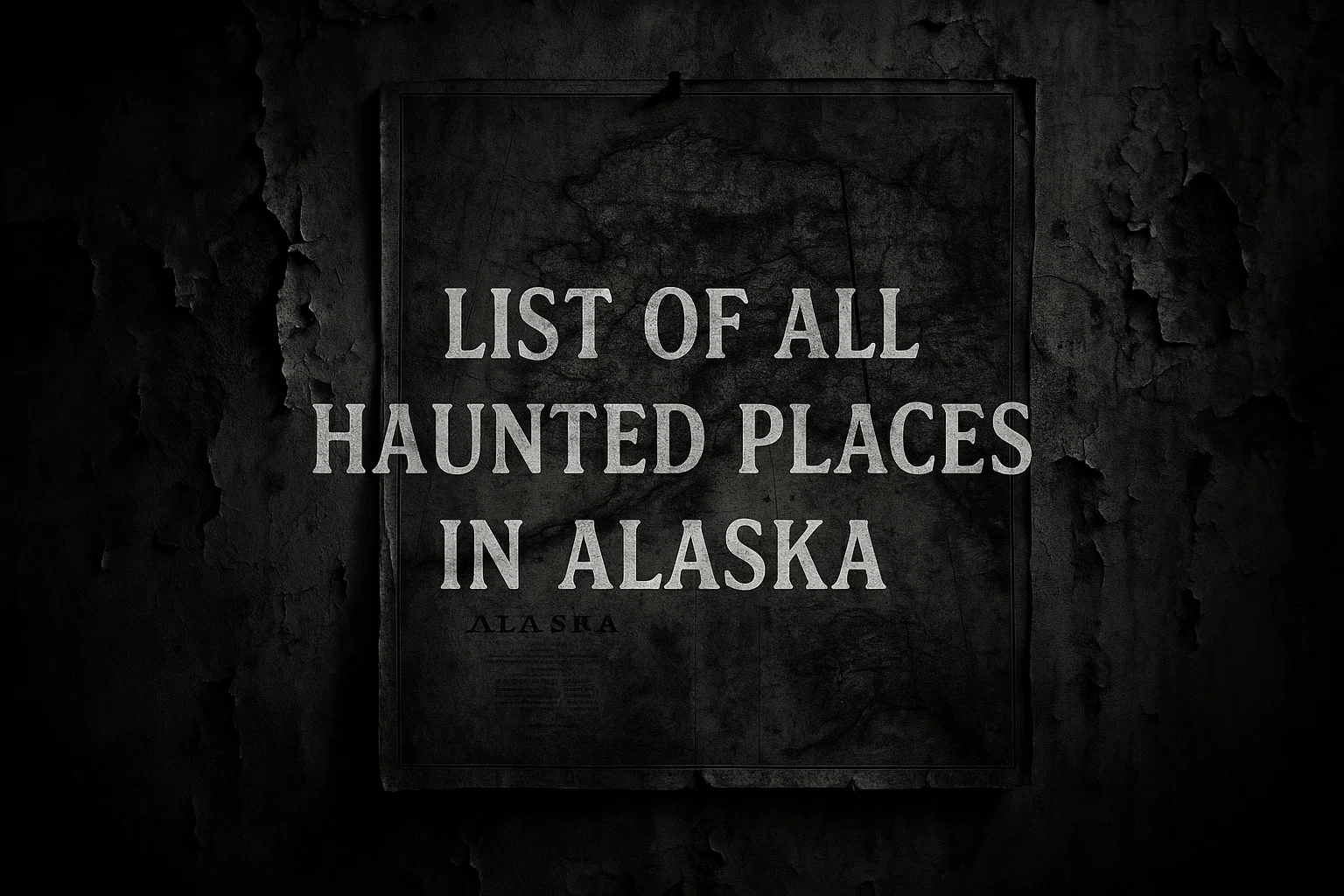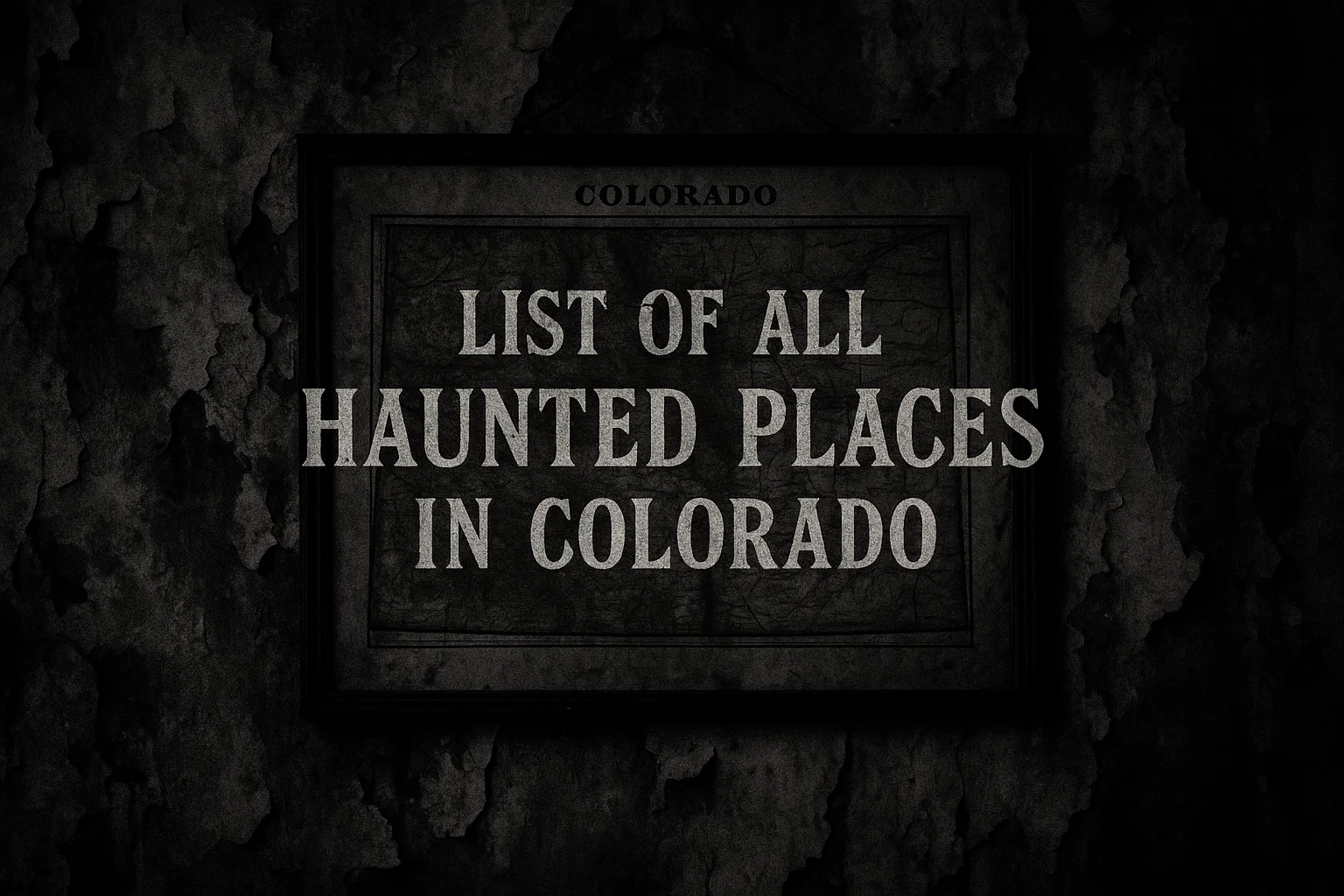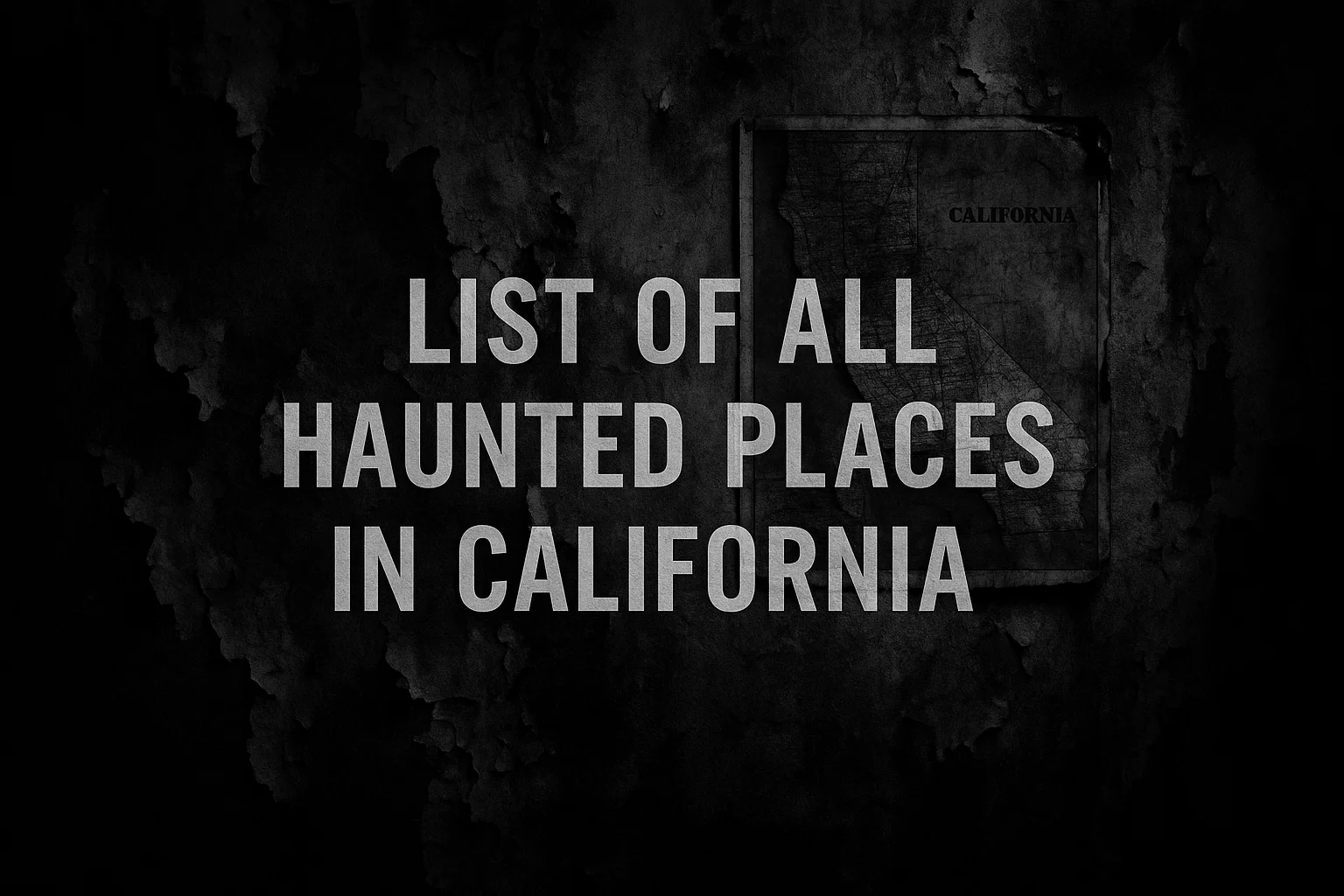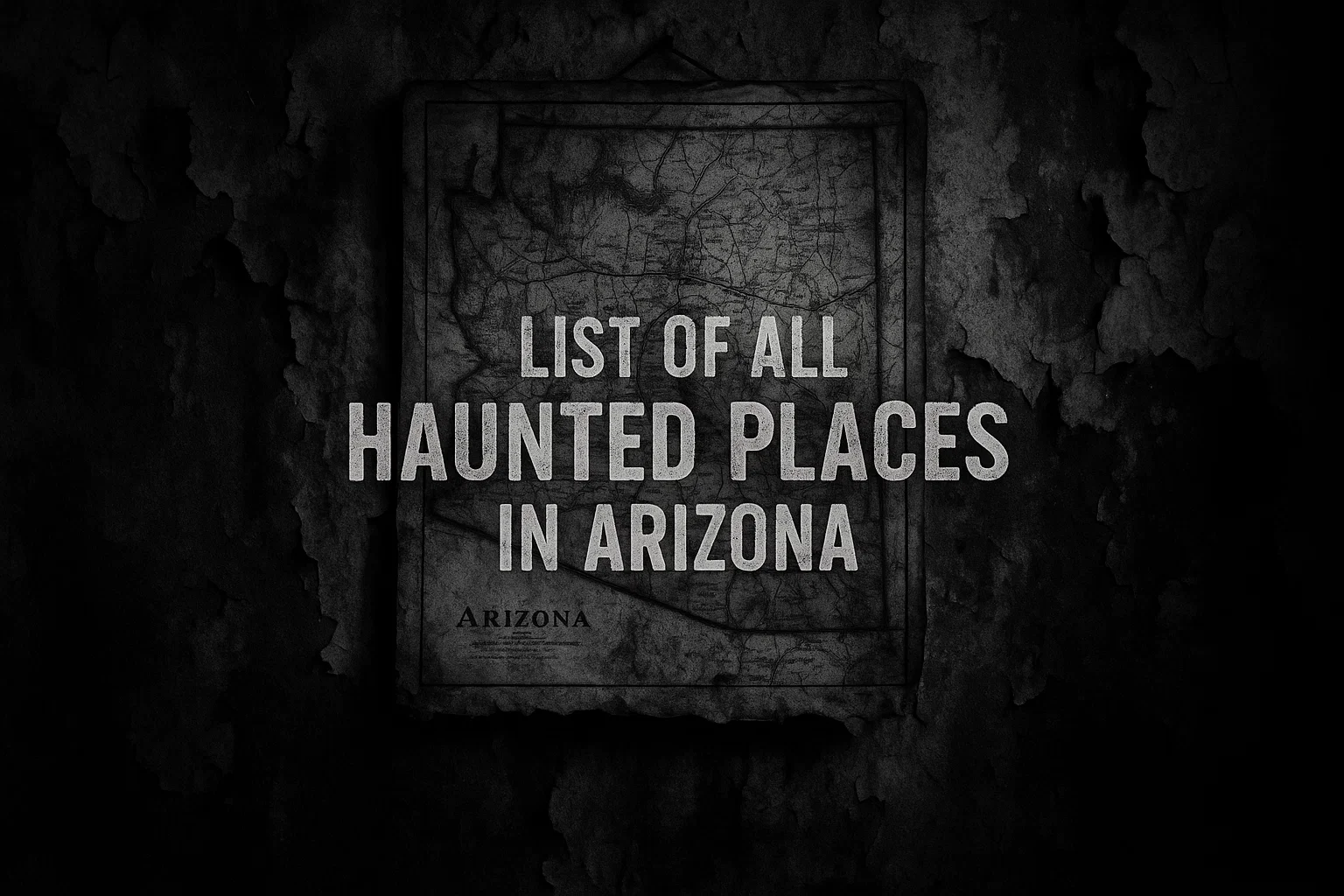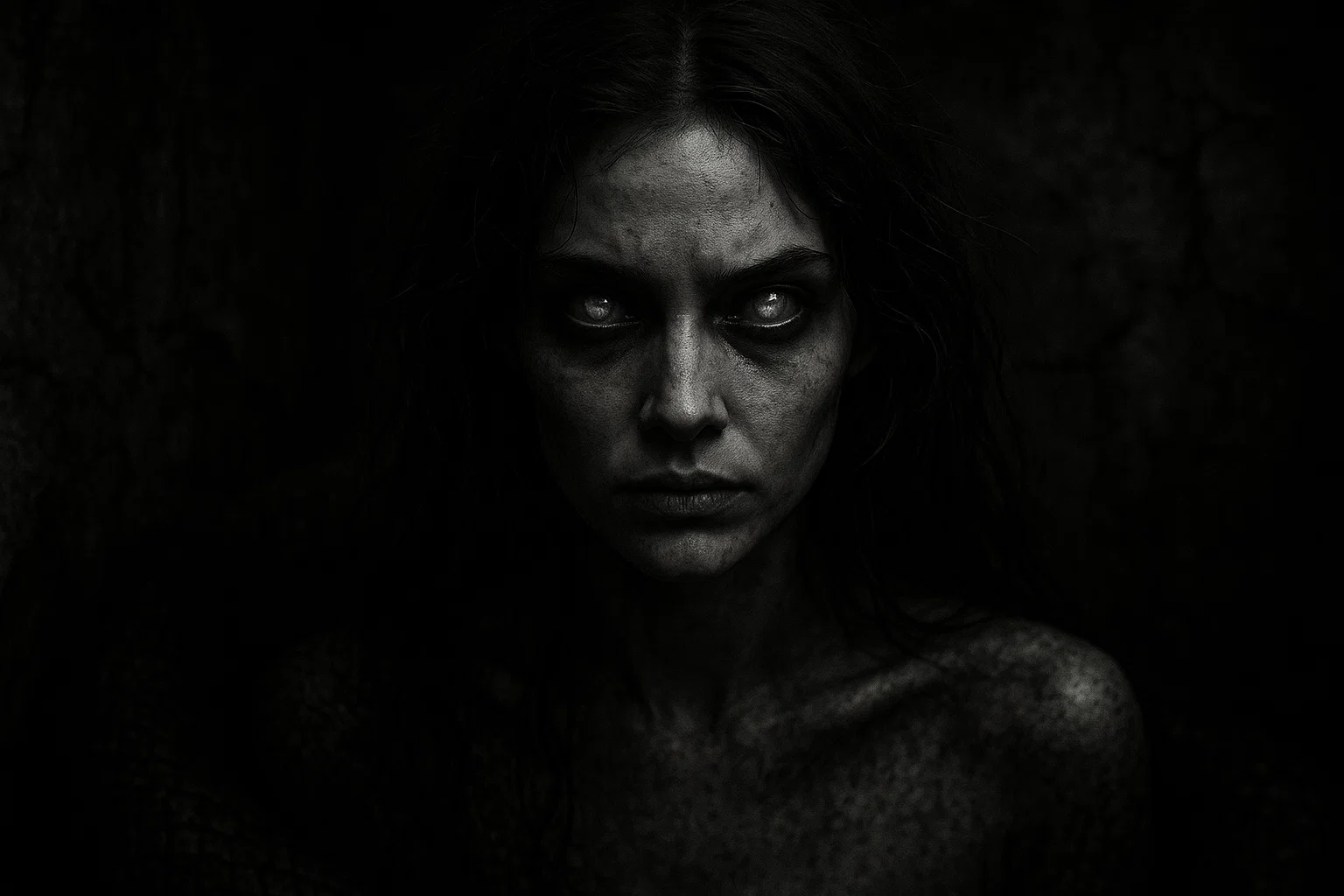Arkansas’s landscape, marked by the scars of frontier violence, Civil War carnage, and personal devastations, harbors a multitude of sites where tragedy’s residue manifests as spectral unrest.
These allegedly haunted places in Arkansas—from opulent hotels repurposed as fraudulent health resorts to blood-soaked battlefields and execution grounds—echo with the anguish of construction fatalities, quackery-induced deaths, wartime massacres, and untimely strokes that severed lives in their prime.
Common motifs include the brutal toll of industrial mishaps, where workers plummeted from scaffolds or were decapitated by locomotives; the hubris of self-proclaimed healers peddling spring water as elixirs while patients withered; and the inexorable grip of judicial retribution, with gallows claiming dozens in a single era.
Summary
Crescent Hotel, Eureka Springs
The Crescent Hotel, perched atop West Mountain in Eureka Springs (Carroll County), Arkansas, exemplifies late 19th-century resort architecture with its palatial Victorian design, including a multi-story facade, expansive verandas, and a signature five-story tower.
Known as one of the most haunted places in Arkansas, the hotel was built between 1884 and 1886 under the auspices of the Eureka Springs Improvement Company, led by former Arkansas Governor Powell Clayton.
Initially, the hotel was envisioned as a premier destination for affluent visitors seeking the town’s purportedly curative mineral springs. Architect Isaac S. Taylor’s blueprint promised opulence, with 120 guest rooms, gas lighting, and scenic overlooks of the Ozark Mountains. The structure opened on May 20, 1886, amid grand fanfare.
Still, financial strains from overambitious development and declining tourism soon led to its closure by 1908.
Tragedy shadowed the hotel from inception. During construction, an Irish stonemason fell to his death from the fourth-floor scaffolding into what became Room 218, a site later notorious for paranormal activity.
Shortly after opening, a five- or six-year-old girl tumbled down the grand staircase from the fourth floor to the basement, succumbing to her injuries. These early losses paled in comparison to the horrors of the 1930s, when Norman Baker—a convicted fraudster expelled from Iowa for practicing medicine without a license—acquired the property in 1937 and rebranded it the Baker Cancer Hospital.
Posing as “Doctor” Baker, he lured terminal patients with promises of a spring-water cure, subjecting them to brutal, unproven treatments in an on-site morgue where autopsies disposed of remains in cloth-wrapped jars unearthed during 1980s renovations. Dozens perished under his care, their final days marked by isolation and false hope, until federal mail fraud charges imprisoned him in 1940.
These cumulative afflictions—accidental fatalities, childhood peril, and medical malpractice—underpin the Crescent’s designation as “America’s Most Haunted Hotel.”
Purchased and restored by Marty and Elise Roenigk in 1997, the site now hosts ghost tours that reveal apparitions, including “Michael” in Room 218, a nurse pushing a gurney, and Baker himself in the basement. Electronic voice phenomena capture whispers and footsteps, while objects levitate and cold spots pervade the area.
A 1967 fire ravaged the fourth-floor south wing, claiming no lives but exacerbating the unrest. Listed on the National Register of Historic Places since 1978, the Crescent endures as a nexus of spectral lore, its grandeur a facade for the unresolved agonies of ambition and deceit.
You May Also Like: 6 Real Haunted Houses in Arkansas with Chilling True Stories
Allen House, Monticello
The Allen House, a Queen Anne Victorian residence in Monticello (Drew County), Arkansas, features neoclassical porch columns, Gothic accents, and a commanding presence on North Main Street.
Built in 1906 by local entrepreneur Joe Lee “Jolie” Allen, the home accommodated his wife, Caddye, and his daughters, Lonnie Leigh, Ladell, and Loui, amid the lumber and mercantile prosperity of the early 20th century. Allen’s enterprises in hotels, loans, and automobiles thrived until October 23, 1917, when he was fatally struck by a car during a demonstration. His body was laid out in the parlor for a funeral two days later.
The gravest sorrow befell the family through Ladell Allen Bonner, born in 1894. Her 1914 marriage to Boyd Bonner dissolved in divorce by 1927, yielding a son, Allen Bonner, who died of pneumonia in 1944 at age 28.
Why Do So Many Successful People Secretly Wear a Little Blue Eye?
Limited time offer: 28% OFF. For thousands of years, the Turkish Evil Eye has quietly guarded wearers from the unseen effects of jealousy and malice. This authentic blue glass amulet on a soft leather cord is the real thing – beautiful, powerful, and ready for you.
Isolated in the family home by the late 1940s, Ladell ingested mercury cyanide on Christmas night 1948 during a holiday gathering, an act ruled suicide. She endured twelve days of torment before expiring on January 5, 1949, at 54.
Subsequent owners, Mark and Rebecca Spencer, uncovered attic love letters in the early 2000s, revealing a decades-long affair with Prentiss Savage, whose rejection had precipitated her despair.
These intertwined calamities—paternal accident, filial loss, and romantic betrayal—fuel the hauntings at the Allen House (and also this house’s status as one of the most haunted places in Arkansas).
After the family’s demise, the structure was divided into apartments. The Spencers restored it in 1998 and chronicled the phenomena in their 2012 book, A Haunted Love Story: The Ghosts of the Allen House. Apparitions of Ladell appear at the sealed bedroom window, alongside cold spots, footsteps, and electronic voice phenomena, which have been documented by over twelve paranormal teams.
Shadowy figures and levitating objects persist, transforming the restored elegance into a repository of unresolved anguish. Though public tours ceased in 2024, the Allen House remains a cornerstone of Arkansas’s haunted legacy.
Arlington Resort Hotel & Spa, Hot Springs
The Arlington Resort Hotel & Spa, at 239 Central Avenue in Hot Springs (Garland County), Arkansas, embodies Spanish Colonial Revival architecture with its 1924 reconstruction, featuring twin domed towers, expansive porches, and a 500-room capacity as the state’s largest hotel.
Originally a four-story wooden edifice, it was opened in 1875 by financier Samuel Fordyce. The establishment catered to the mineral springs’ therapeutic allure, boasting gas lighting and a grand courtyard.
Demolished in 1892 amid expansion, the second iteration burned in 1913, prompting the rise of the current brick structure, which hosted dignitaries, celebrities, and Prohibition-era gangsters like Al Capone, who commandeered the fourth floor.
Tragedies permeated its timeline, commencing with the 1875 original’s construction-era fatalities, though undocumented, and escalating during World War II when the U.S. Army requisitioned it as a recreation and redistribution base for injured soldiers.
Primitive medical care in repurposed spaces led to numerous on-site deaths from untreated wounds and infections, their cries echoing through bloodstained halls.
Post-war, the hotel’s role as a transient hub for gamblers and outlaws invited violence; whispers persist of unsolved murders in shadowy corridors, compounded by the 1924 rebuild’s labor mishaps, where workers perished in scaffolding collapses.
These layers of wartime mortality and illicit demise underpin Arlington’s haunted repute. Staff report wine glasses leaping from shelves, apparitions in vintage attire vanishing mid-stride, and a spectral girl in pink haunting the lobby.
A woman in a wedding gown gazes from upper windows at night, while a bellman paces the fourth floor, and a suited man waves from the laundry. Electronic voice phenomena capture whispers and slamming doors, evoking the hospital’s despair. Despite official denials of hauntings, paranormal probes yield cold spots and phantom music.
A National Register site since 1984, Arlington is today known as one of the most haunted places in Arkansas.
You May Also Like: The 15 Most Haunted Places in Arizona
Capital Hotel, Little Rock
Another entry in our list of the most haunted places in Arkansas is the Capital Hotel, at 111 West Markham Street in downtown Little Rock (Pulaski County), Arkansas.
Among the city’s first electrified buildings, it hosted luminaries from the Gilded Age onward, including presidents and celebrities, symbolizing post-Reconstruction elegance amid the commerce of the Arkansas River.
Calamity struck during construction when a laborer plummeted from scaffolding, his fatal fall mirroring similar incidents at contemporaneous sites like the Crescent Hotel.
The 1932 tragedy of state representative Ira Gurley, crushed to death by the malfunctioning south elevator, amplified the unrest; his apparition is said to haunt the shaft, causing doors to open unbidden. Civil War echoes linger from the hotel’s proximity to Union occupations, where soldiers perished from skirmishes and disease in nearby barracks.
Ever Walk Into a Room and Instantly Feel Something Watching You?
Millions have used burning sage to force out unwanted energies and ghosts. This concentrated White Sage & Palo Santo spray does the same job in seconds – just a few spritzes instantly lifts stagnation, breaks attachments, and restores peace most people feel immediately.
These construction and mechanical fatalities, intertwined with wartime losses, explain the Capital’s hauntings. Guests report a young woman’s ghost on the fourth floor, her fatal tumble from a balcony manifesting as misplaced luggage and spectral wails. Disembodied footsteps echo through the corridors, and cold spots prevail in the lobby.
As a member of Historic Hotels of America since 1985, the Capital preserves its grandeur while harboring these echoes of abrupt ends, where mechanical betrayal and structural peril defy the veneer of Victorian refinement.
Basin Park Hotel, Eureka Springs
The Basin Park Hotel, at 12 Spring Street in Eureka Springs (Carroll County), Arkansas, showcases six progressively receding floors in a modified Prairie style, with yellow brickwork and a rooftop garden overlooking Basin Spring Park.
Built in 1905 by investor William Duncan on the site of the 1890 Perry House fire, it capitalized on the town’s healing springs boom, offering 100 rooms and proximity to the Osage Neutral Ground, a historic Native American sacred site.
Tragedies rooted in the 1890 blaze, which razed the wooden Perry House amid Eureka Springs’ four devastating fires, claimed undocumented lives in the inferno’s chaos. Prohibition-era gambling dens in the hotel’s speakeasies drew outlaws like the Dalton Gang, fostering shootouts and fatal brawls.
A 1930s construction worker’s scaffold fall during expansions added to the toll, while wartime repurposing as a convalescent home saw soldiers succumb to untreated injuries.
These conflagrations, illicit violence, and occupational hazards underpin the Basin’s hauntings. A spectral cowboy—possibly a 19th-century outlaw seeking spring cures—manifests in mirrors, alongside a woman’s apparition in the ballroom.
Footsteps echo through empty halls, lights flicker on their own, and electronic voice phenomena capture whispers. As part of the National Register-listed Eureka Springs Historic District since 1970, the hotel blends vintage charm with paranormal tours, its layered misfortunes transforming hospitality into a confrontation with the Ozarks’ lawless undercurrents.
You May Also Like: 15 Most Terrifying Haunted Hotels in Alabama
Old Fort Smith Courthouse (Judge Parker Courthouse), Fort Smith
The Old Fort Smith Courthouse, located at 301 Parker Avenue in Fort Smith, Arkansas (Sebastian County), comprises a 1851 barracks-courthouse hybrid and an 1888 jail, emblematic of frontier federal authority.
Transferred from military to judicial use in 1871, it housed the U.S. District Court for the Western District of Arkansas, which oversaw the lawlessness in the Indian Territory.
Under Judge Isaac Parker from 1875 to 1896, the court adjudicated 13,000 cases, sentencing 160 to death—79 executed on the adjacent gallows in mass hangings that drew crowds.
These spectacles, including the 1875 quadruple execution of Cherokee outlaws, were marked by botched drops causing prolonged strangulation, their final gasps haunting witnesses. Parker’s own 1896 death from heart disease at 63 concluded an era of relentless justice.
Such judicial brutality—public executions and jurisdictional overreach—fuels the site’s hauntings. Apparitions of condemned men pace cells, chains rattle in the “Hell Hole” dungeon, and Parker’s spectral form appears at the cemetery. Electronic voice phenomena yield pleas for mercy, while cold spots evoke gallows despair.
Gurdon Light, Gurdon
The Gurdon Light, an atmospheric luminescence near abandoned Missouri-Pacific railroad tracks in Gurdon (Clark County), Arkansas, manifests as a bobbing orb—white, blue, green, or orange—hovering above the rails in a wooded four-mile stretch.
First documented in 1932, local reports indicate it predates modern explanations, such as Interstate 30 headlight reflections, and that sightings persist under all weather conditions.
The phenomenon ties to December 21, 1931, when foreman William “Will” McClain argued with worker Louis McBride over work assignments, prompting McBride to bludgeon McClain with a shovel and railroad spike maul, severing his head.
Convicted and electrocuted on July 8, 1932, McBride’s execution coincided with intensified sightings, folklore positing McClain’s lantern ghost searches for his head. Earlier accounts link it to Native American lore or the piezoelectric properties of seismic quartz along the New Madrid fault.
This decapitation and its vengeful aftermath explain the light’s eerie persistence. Witnesses describe it retreating when approached, reappearing behind, captured in 1994 Unsolved Mysteries footage.
As one of the most haunted places in Arkansas, the Gurdon Light embodies the spectral enigmas of rural Arkansas, where industrial murder begets an eternal, wandering glow.
You May Also Like: Do Residual Hauntings Fade Over Time?
Mount Holly Cemetery, Little Rock
Mount Holly Cemetery, spanning four blocks at Broadway and 12th Streets in Little Rock (Pulaski County), Arkansas, is a Victorian-era necropolis established on February 23, 1843, via donation from Senator Chester Ashley and Roswell Beebe.
Encompassing Neo-Classical to Art Deco monuments, it includes eleven governors, thirteen Supreme Court justices, four U.S. senators, four Confederate generals, and twenty-one mayors—earning the moniker “Westminster Abbey of Arkansas.” An 1843 ordinance allocated space for Catholic burials until the opening of Calvary Cemetery in 1872.
Tragedies abound: the 1862 execution of 17-year-old Confederate spy David O. Dodd, hanged nearby and reinterred here after a botched attempt prolonged his suffering; smallpox epidemics claiming steamboat passenger Jennie M. Cash in 1850, her hasty grave marked by a community stone; and Civil War skirmishes burying soldiers from both sides amid the 1863 Battle of Little Rock.
The cemetery’s Trail of Tears ties include Cherokee interments from forced relocations. These executions, plagues, and wartime graves underpin hauntings: orbs and period-clad apparitions in photographs, Native American and Confederate shadows at dusk, disembodied voices near monuments.
King Opera House, Van Buren
Our list of the most haunted places in Arkansas can’t be complete without the infamous King Opera House. Located at 427 Main Street in Van Buren’s Historic District (Crawford County), Arkansas, is a Victorian performance hall that opened on October 18, 1901, by Henry B. King.
Initially, the Wallace Block, housing a billiard parlor, saloon, and newspaper, the second-floor theater hosted vaudeville until a 1914 fire gutted it. The location reopened in 1919 as the Van Buren Theatre. Remodeled in 1937 by Malco as the Bob Burns Theatre, in honor of comedian Bob Burns, it evolved into a cinema before the 2010 restoration, becoming a multipurpose venue.
Tragedy struck in April 1904 when actor Charles H. Tolson, romancing 17-year-old Allye Parchman—daughter of physician Dr. James Parchman—was shot by her father at the Van Buren depot during an elopement attempt.
Tolson, wounded in the abdomen and arm, died the next day in Fort Smith, declaring Parchman’s friendship. Acquitted on self-defense, Parchman faced community scorn; Allye relocated to Missouri.
This paternal shooting and thwarted romance explain hauntings: Tolson’s apparition seeks backstage work, footsteps echo empty halls, and a lady in white—possibly Allye—appears in restrooms.
You May Also Like: The Loveland Frog Mystery: Real Cryptid or Local Hoax?
Pea Ridge National Military Park, Pea Ridge
Pea Ridge National Military Park, encompassing 4,300 acres near Garfield (Benton County), Arkansas, preserves the site of the March 7-8, 1862, Battle of Pea Ridge—a Union victory over Confederate forces that secured Missouri for the North.
Over 23,000 combatants clashed amid Ozark ridges, with the park’s visitor center, trails, and auto tour road detailing the pivotal Trans-Mississippi engagement. Established by Congress in 1956 through Arkansas’s donation of 5,000 acres, it was dedicated in 1963.
The battle’s ferocity yielded 2,000 casualties: artillery barrages dismembered soldiers on Leetown and Elkhorn Tavern fields. At the same time, close-quarters combat left bayonet wounds and grapeshot fatalities.
Cherokee auxiliaries suffered disproportionately, their coerced service culminating in mass graves; Union dead included Midwestern regiments decimated in ambushes.
These battlefield slaughters—artillery carnage, melee horrors, and ethnic conscription—underpin hauntings: phantom musket volleys and cannon booms at dusk, soldier apparitions marching trails, disembodied shouts near monuments.
Empress of Little Rock Bed and Breakfast (Hornibrook Mansion), Little Rock
The Empress of Little Rock Bed and Breakfast, formerly Hornibrook Mansion at 2120 South Louisiana Street in Little Rock’s Quapaw Quarter (Pulaski County), Arkansas, exemplifies Gothic-Queen-Anne-Victorian design with its two-story brick edifice, wraparound porch, divided grand staircase, and tower room.
Commissioned in 1888 by Canadian immigrant James H. Hornibrook—a prosperous saloon magnate partnering with Miles Q. Townsend since 1867—the residence rivaled competitor Angelo Marré’s Villa Marré, funded by the liquor trade amid post-Civil War recovery. Hornibrook selected the southern outskirts to evade scrutiny, incorporating a tower for surveillance of raids.
Afflictions plagued the family: son Matt died in childhood post-relocation, shadowing early years. Construction delays yielded no solace; on July 16, 1890, Hornibrook, aged 50, suffered an apoplectic stroke at the front gate after a saloon gathering, his premonition prompting a displayed death mask.
The Panic of 1893 strained finances, forcing Margaret to sell in 1896. Repurposed as Arkansas Women’s College (1897-1930s), it endured the Great Depression’s vacancies, then became a nursing home and apartments, hosting institutional isolations and unnamed declines.
These bereavements—infantile mortality, paternal collapse, economic ruin—inform hauntings.
Restored in 1995 by Sharon and Robert Blair, the apparitions include a Homburg-hatted man (identified as Hornibrook) in the attic, a pink-gowned woman believed to be a chambermaid, and a sea captain.
You May Also Like: Who Is Zagan, Hell’s Great Transformer?
MacArthur Museum of Arkansas Military History, Little Rock
The last entry in our list of the most haunted places in Arkansas is the MacArthur Museum of Arkansas Military History. The museum is located in the 1840 Tower Building at 503 East 9th Street in Little Rock’s MacArthur Park (Pulaski County), Arkansas. It is the state’s oldest surviving arsenal structure—a two-story brick edifice with an octagonal tower for munitions storage.
Built to safeguard the frontier from Native incursions, it served as a Union and Confederate outpost, hospital, and barracks until the 1892 land swap with the city.
Civil War convulsions defined its toll: seized by Confederates in 1861 sans secession, recaptured in 1863’s Battle of Little Rock with casualties from artillery and infantry clashes.
As a hospital, it witnessed dysentery and wound deaths under primitive conditions; the botched 1862 execution of spy David O. Dodd, hanged nearby and reinterred in adjacent Mount Holly, echoed through the grounds. Post-war, 1880 birth of Douglas MacArthur amid Captain Arthur MacArthur’s posting added irony to a site of martial strife.
These wartime ravages—skirmish fatalities, medical failures, and espionage executions—underpin hauntings: soldier apparitions in 19th-century clothes patrol exhibits, disembodied footsteps descend staircases, and shadows duel in the basement.

